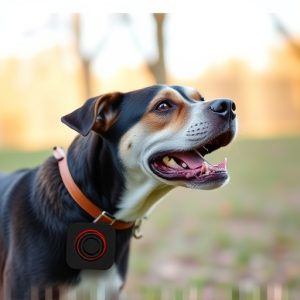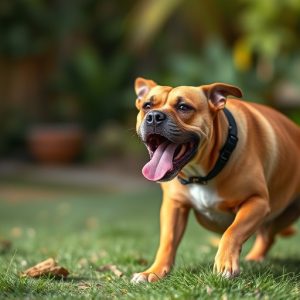Personal Security Dog Deterrent Devices: Optimizing Sonic Repellents
Personal Security Dog Deterrent Devices (PSDDs) utilize sonic and ultrasonic repellents to protect a…….
Personal Security Dog Deterrent Devices (PSDDs) utilize sonic and ultrasonic repellents to protect against aggressive dogs, offering a safe solution without harming animals. The effectiveness of PSDDs lies in adjusting training levels to tailor responses to specific dog breeds and scenarios, minimizing false alerts and ensuring appropriate reactions to threats. By manipulating sound frequency and intensity, these devices are ideal for diverse environments, from residential areas with various dog sizes to commercial spaces with targeted breed concerns. Regular testing, strategic placement, backup power, and maintenance checks ensure optimal performance and safety.
Personal security dog deterrent devices offer a innovative approach to safeguarding your space. This comprehensive guide explores the intricacies of these powerful tools, focusing on Adjusting Sonic Repellent Training Levels for maximum effectiveness. From understanding the technology behind them to implementing safety measures, we demystify these devices. Learn how sonic repellents work, discover best practices for training, and gain insights into ensuring a secure environment without compromising well-being.
- Understanding Personal Security Dog Deterrent Devices
- The Role of Sonic Repellents: How They Work
- Adjusting Training Levels for Optimal Effectiveness
- Implementation and Safety Considerations
Understanding Personal Security Dog Deterrent Devices
Personal Security Dog Deterrent Devices (PSDDs) are innovative tools designed to protect individuals and properties from potential threats posed by dogs, especially aggressive or stray ones. These devices use a combination of sonic and ultrasonic repellents to deter unwanted canine behavior without causing harm. The key to their effectiveness lies in adjusting the training levels, which can be tailored to different scenarios and dog breeds. By modifying the frequency and intensity of the sound emitted, users can train their PSDDs to recognize specific dogs, responding only when necessary. This feature ensures that the device remains sensitive yet avoids unnecessary activation from familiar pets or wildlife.
Adjusting the sonic repellent training levels allows for a more precise and customized approach to canine deterrence. It enables users to set sensitivity thresholds, ensuring the device responds appropriately to potential threats while minimizing false alerts. This adaptability is crucial in various environments, from residential areas with both large and small dogs to commercial spaces where only specific breeds might be a concern. By fine-tuning these settings, individuals can create a safe haven, deterring aggressive behavior without causing distress to well-behaved pets.
The Role of Sonic Repellents: How They Work
Sonic repelents are an innovative personal security device designed to deter potential threats through high-frequency sound waves. These devices emit an inaudible to humans sound at levels that can be uncomfortable for dogs and other animals, effectively creating a safe zone around the user. The principle behind their effectiveness lies in adjusting the sonic repellent training levels; by setting the right intensity, users can train the device to activate only when necessary, minimizing false alarms and preserving battery life.
When an intruder approaches, the sonic repellent detects movement through sensors and triggers the high-frequency sound. This sudden burst of noise is designed to startle and disorient the potential threat, providing the user with valuable time to react or retreat. The device’s sensitivity can be fine-tuned to respond to different scenarios, ensuring that it remains effective against various intruders without causing harm to nearby pets or wildlife.
Adjusting Training Levels for Optimal Effectiveness
When it comes to personal security and utilizing a dog deterrent device like a sonic repellent, adjusting the training levels is key to achieving optimal effectiveness. These devices emit high-frequency sound waves that are harmless to humans but can startle and deter dogs, so fine-tuning the intensity and sensitivity settings is crucial for both precision and minimal false triggers.
For instance, starting with a lower training level allows you to gauge your dog’s reaction without overwhelming them. Gradually increasing the level as your pet becomes more accustomed to the device ensures it remains effective over time. Additionally, adjusting the sonic repellent’s sensitivity to match your environment and your dog’s behaviors can prevent unnecessary activation caused by ambient noises or other animals passing by.
Implementation and Safety Considerations
When implementing a personal security dog deterrent device, such as a sonic repellent, it’s crucial to adjust training levels for optimal effectiveness and safety. Starting at lower volumes and gradually increasing as needed allows for acclimation and reduces potential harm or discomfort. Regular testing in various environments ensures the device performs consistently, especially in conditions that may affect sound transmission, like wind or rain.
Safety considerations extend beyond volume levels. Placement is key; strategically positioning the device where it’s visible yet not obstructed offers better deterrence without causing alarm to bystanders. Additionally, ensuring the device complies with local regulations and keeping backup power sources on hand for emergencies enhances safety and reliability. Regular maintenance checks further safeguard its functionality, guaranteeing a robust security measure that responds effectively when needed.
Personal Security Dog Deterrent Devices, particularly sonic repelents, offer a non-lethal yet effective way to protect your space. By understanding how these devices work and adjusting the training levels accordingly, you can achieve optimal effectiveness while ensuring safety for both your property and potential visitors. Remember, the key lies in Adjusting Sonic Repellent Training Levels to match the sensitivity needed for your specific environment and the behavior of nearby dogs.


